“Ouch!!!” exclaimed Musa while in the toilet.
“Is it happening again? You’re spending so long in the toilet every day! Maybe you have buasir.” Replied his wife, Aisyah, who heard him from the living area.
“I have some blood on the tissue again, and it hurts…” sighed Musa.
Aisyah encouraged Musa to speak to their doctor about this because it has been going on for months. Musa felt embarrassed about this issue. However, it has caused him a lot of distress, so he visited his local clinic.
At the clinic, the doctor examined Musa and informed him that he had haemorrhoids.
What are haemorrhoids?
There are no exact figures of how common haemorrhoids are in Malaysia. The feeling of embarrassment can cause many not to seek medical treatment. However, it can happen to anyone, and it can cause significant discomfort in daily life.
The following are some examples of risk factors:
Chronic constipation
When an individual finds it hard to pass stool, they may strain. The pressure on the anus causes the veins or lower rectum to swell up. Closely tied into this issue is a low-fibre diet. Fibre helps add bulk to the faeces, making it easier to push it along the digestive tract.
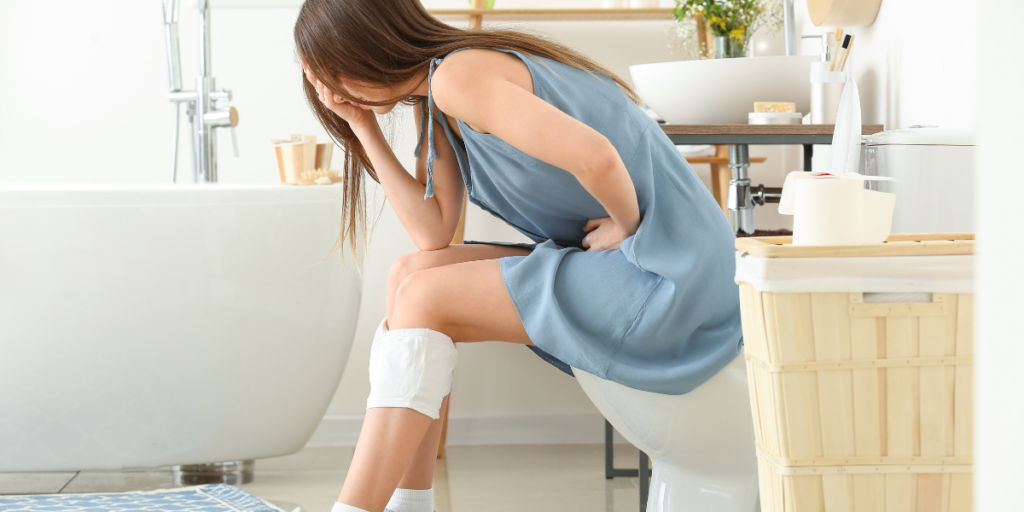
Prolonged sessions in the toilet
With the rise in technology, some of us use our phones while in the toilet. When we sit on the toilet seat, it causes our rectum to be lower than the rest of our backside. It will increase the pressure on our rectum and anus, causing haemorrhoids.
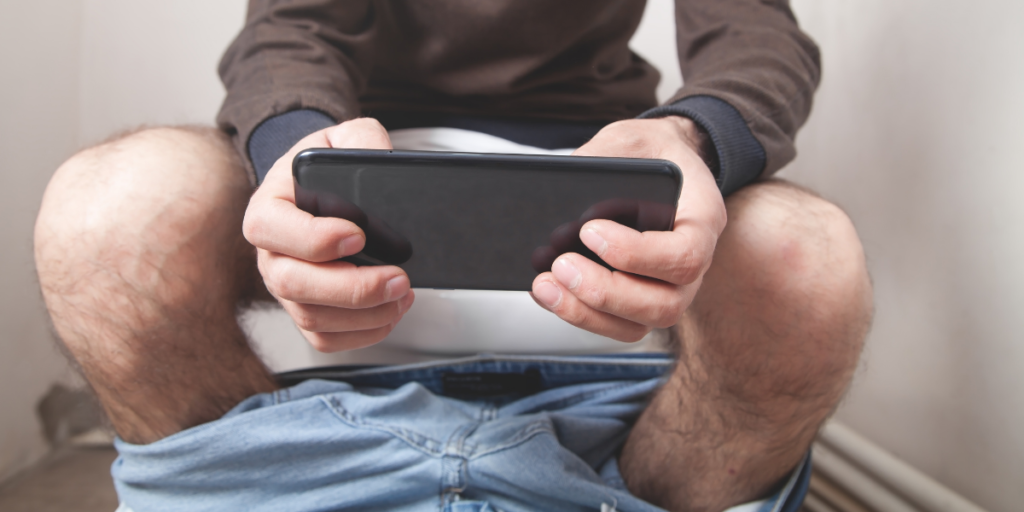
Additionally, gravity works against us, allowing blood to pool in the veins and cause swelling.
Ageing
As we age, the muscles and tissues of our body start to weaken. And the same happens near the rectum and anus. As such, less pressure can cause haemorrhoids in the elderly.
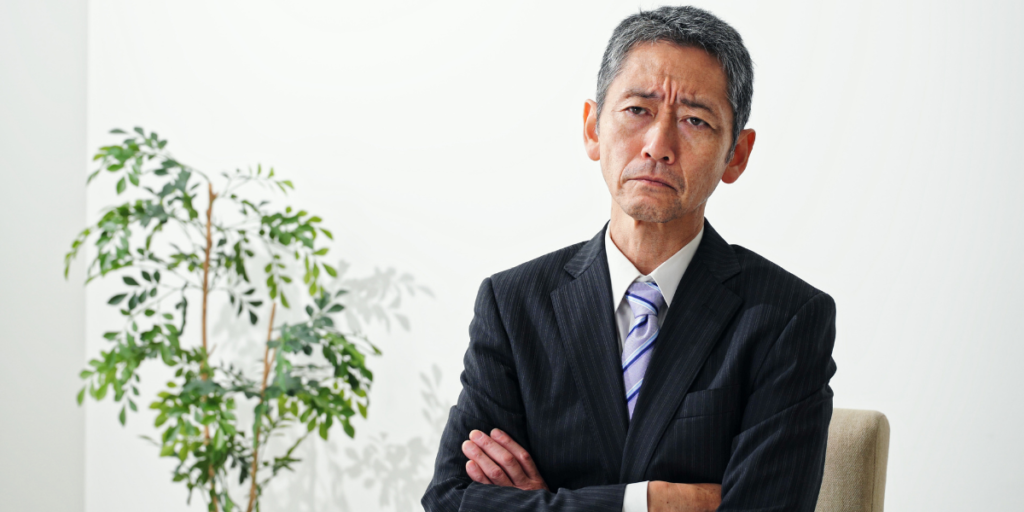
Furthermore, constipation is more common in the elderly. It may be due to the medications that the elderly commonly use, such as iron supplements or pain killers.
Illnesses such as low thyroid hormone levels and stroke can contribute to constipation in the elderly.
Lifting heavy objects
When lifting heavy objects, we tense up our abdominal muscles. It produces what we call “intraabdominal pressure”. This pressure can transmit to the rectum and anus.
In return, it leads to the same effects one may get from straining. Individuals at risk would be labour workers or weightlifters at the gym.
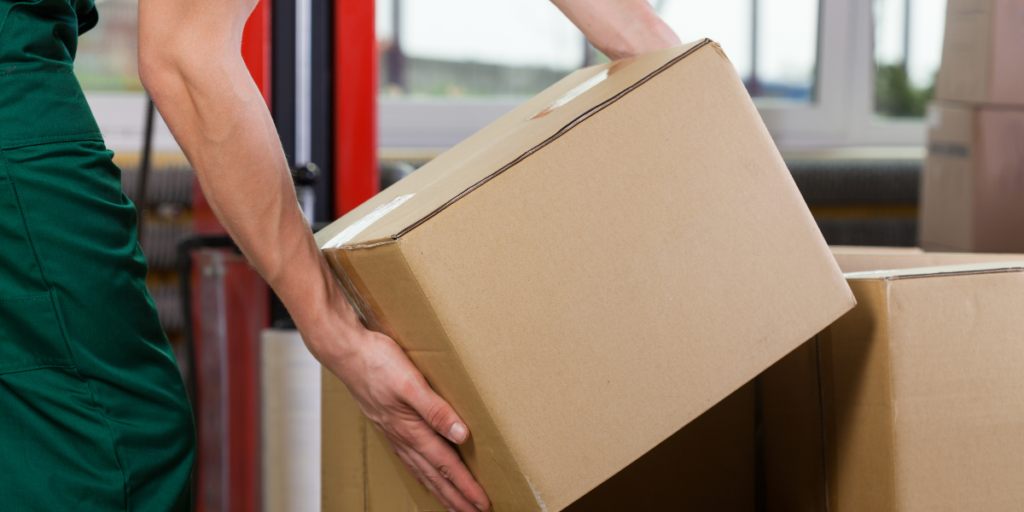
Musa is an avid gym-goer, frequently doing deadlifts and squats at least once a week. He also likes to read WhatsApp messages while sitting on the toilet, to Aisyah’s annoyance. Musa is turning 56 years old this year. These, he thought, must be contributing to his symptoms.
He asked further, “I’ve never heard about the symptoms of haemorrhoids. How do I know that this is happening to me?”
Do I have haemorrhoids?
Both internal and external haemorrhoids can lead to a constellation of recognisable symptoms. The following are some examples:
Bleeding from the rectum
It is the most common symptom that leads to a diagnosis of haemorrhoids. It commonly occurs after opening the bowel, manifesting as blood dripping on a tissue paper. It can happen due to the straining causing a tear. Usually, the bleeding does not come with pain.
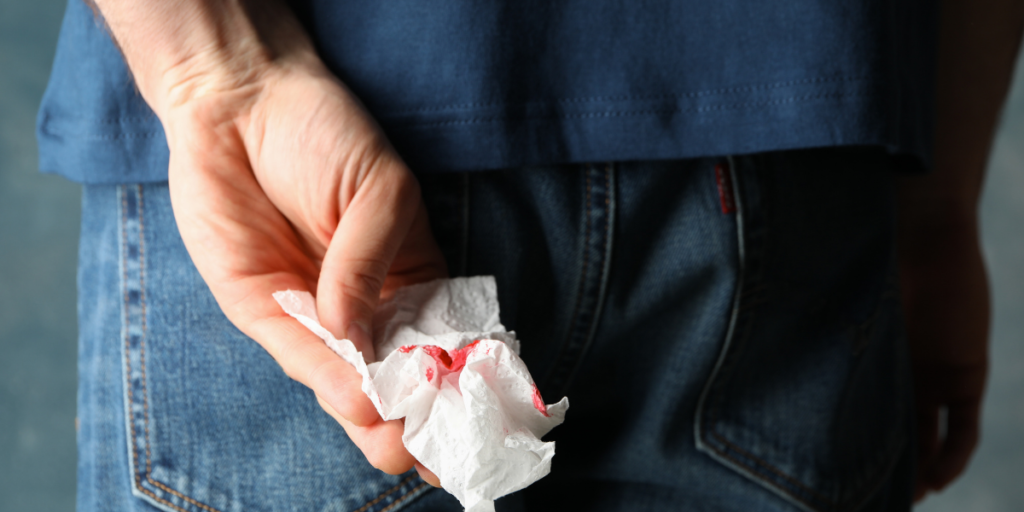
Lump from the anus
Occasionally, haemorrhoids get large progressively. It can protrude out of the anus. Individuals may notice it more when cleaning up after a bowel movement. Less commonly, it can also cause a sensation called tenesmus. It is the feeling that we need to pass stools.
Anal itching
This symptom is more common in internal haemorrhoids. Sometimes, the haemorrhoids can prolapse, meaning to move downwards. They drag mucus near delicate areas of the anus, causing irritation and itching.
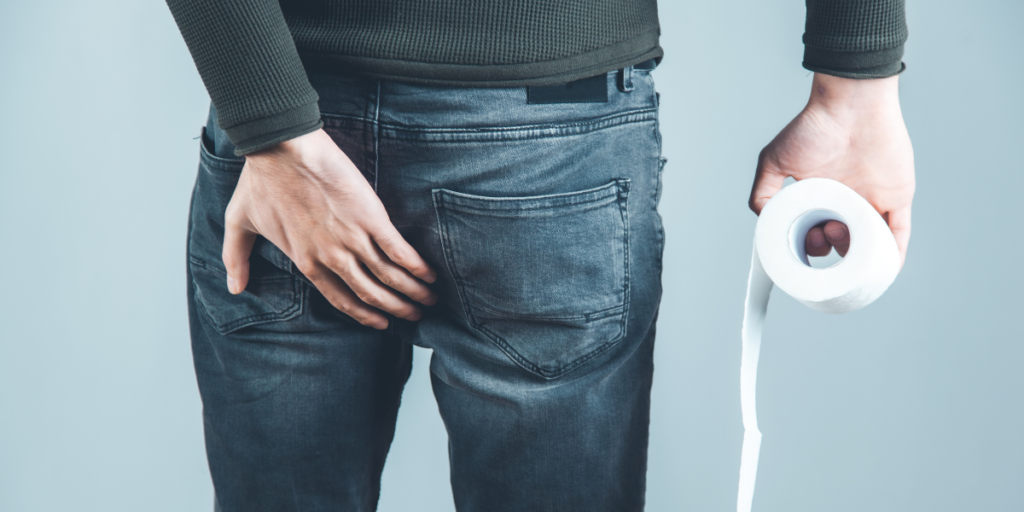
Anal pain
Blood clots can form in the veins affected by haemorrhoids. They irritate surrounding nerves, producing pain when walking, sitting, or having a bowel movement. Prolapse of internal haemorrhoids may also lead to a restriction in blood flow through haemorrhoids, leading to pain.

After hearing the explanation from the doctor, Musa recalls his own experience. He has been having episodes of pain during the passing of his bowels.
There are occasional streaks of blood on the tissue paper when he cleans up. He notices a lump protruding from his anus a couple of times, causing discomfort, and tries to push it back in.
“These haemorrhoids ruin my day. I would be in so much pain after opening my bowels. And I need to rest before doing anything else. Is there a way to get rid of it?” quipped Musa.
How do I treat haemorrhoids?
Fortunately, haemorrhoids are a common condition. Various modalities have been tried and produced to help alleviate the symptoms that come with them.
There are various lifestyle changes, medications, and procedural options available. Each treatment has different success rates based on how severe the haemorrhoids are. Some office procedures may come with side effects as well.
Hence, it is essential to go over the benefits and risks with your doctor. Here are some examples:
Lifestyle changes
We need to modify our lifestyles. One intervention is toilet habit retraining, consisting of frequent reminders to reduce straining and prolonged sitting when using the toilet.
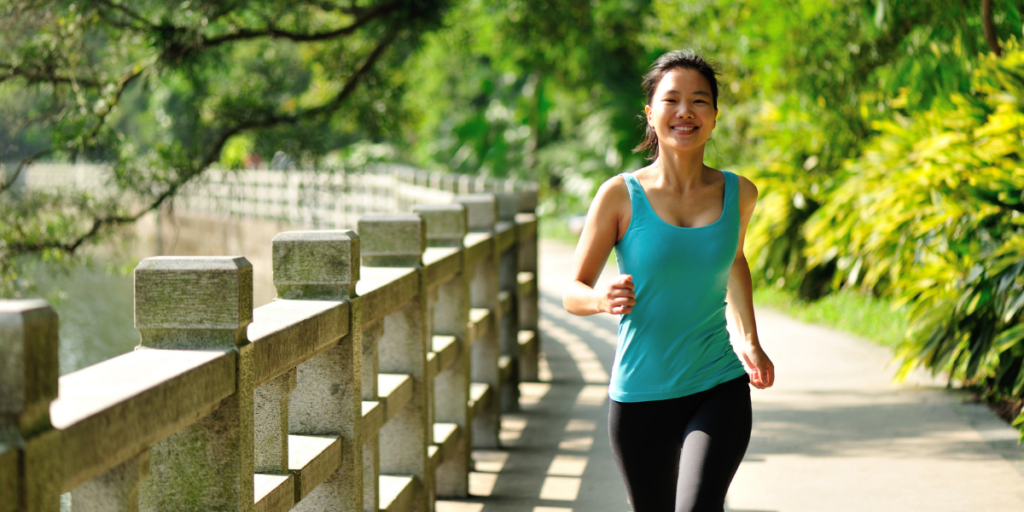
Analgesics
Topical analgesic creams or gel such as Lidocaine and Cinchocaine can blunt the pain and itching from haemorrhoids. Paracetamols help to relieve pain resulting from blood clots in the haemorrhoids.
Corticosteroids
Steroids are widely used in medicine to reduce inflammation. They alleviate the inflammation and resulting pain around the anus.
Bioflavonoids
In contrast to the above two examples of medication, bioflavonoid is a type of health supplement. It is commonly packaged together with vitamin C. It has shown some effect in improving symptoms, thus reducing hemorrhoidal swelling.
Rubber band ligation
A band surrounds the prolapsed tissue and haemorrhoid. The prolapsed tissue then fixes to the rectal wall. It is one of the most effective procedures for haemorrhoids. However, minor pain may occur as a result of the procedure.
Sclerotherapy
As the name implies, “sclero” refers to the hardening of the tissue. A surgeon injects the hardening agent into the tip of haemorrhoids. A hardier tissue will lead to fewer symptoms. The technique is minimally invasive, only requiring a syringe with a needle tip. However, complications such as bleeding, urinary retention or abscess may happen.
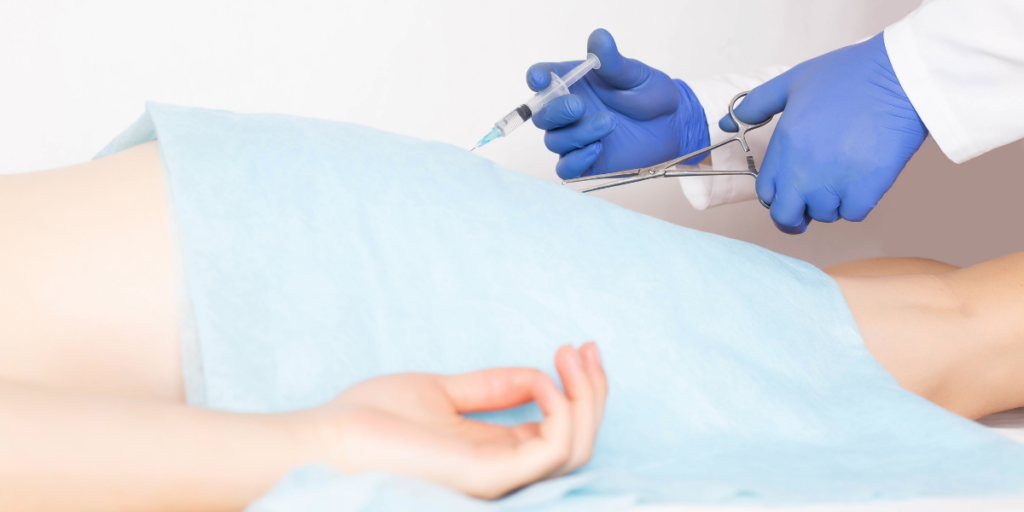
Cryotherapy
This modality utilises freezing agents that help shrink the haemorrhoids. The cooling effect can soothe the swelling, reducing inflammation. However, it is not used often because of various adverse effects such as infection and tenesmus (a feeling like you need to defecate).
Satisfied with the visit to the doctor, Musa opted for the rubber band ligation. He is looking forward to moving on in life without being bothered by “buasir”.
In conclusion, haemorrhoids are a common disease that can present distressing symptoms. However, we should not hesitate to communicate our symptoms to doctors as there are various options to treat them.
References:
1.https://specialty.mims.com/hemorrhoids/signs%20and%20symptoms?channel=gastroenterology
2. https://www.niddk.nih.gov/health-information/digestive-diseases/hemorrhoids/symptoms-causes
3. https://www.ncbi.nlm.nih.gov/pmc/articles/PMC3652936/
4. https://www.ncbi.nlm.nih.gov/pmc/articles/PMC3652936/